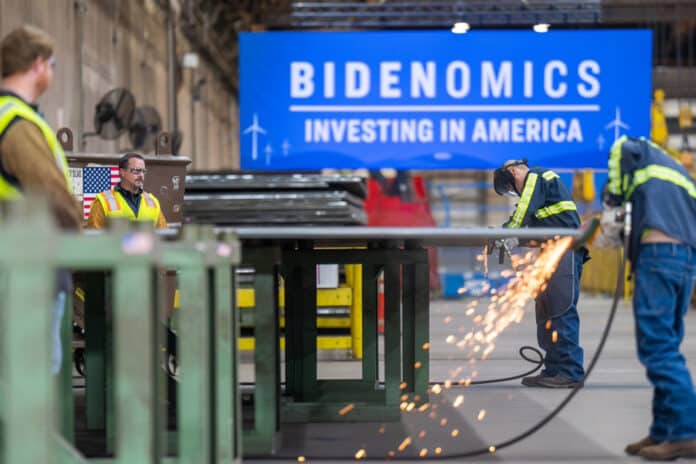
(Daily Caller News Foundation) — Inflation jumped year-over-year in March amid speculation over whether the rate of inflation is really decelerating, according to the latest Bureau of Labor Statistics release on Wednesday.
![]()
The consumer price index (CPI), a broad measure of the price of everyday goods, increased 3.5% on an annual basis in March and 0.4% month-over-month, compared to 3.2% in February year-over-year, according to the BLS. Core CPI, which excludes the volatile categories of energy and food, remained high, rising 3.8% year-over-year in March, compared to 3.8% in February.
“Indexes like the median CPI and trimmed-mean CPI remove outliers and they show inflation much higher than the headline, or even the core, inflation rates,” E.J. Antoni, a research fellow at the Heritage Foundation’s Grover M. Hermann Center for the Federal Budget, told the Daily Caller News Foundation. “That tells us the rise in prices is widespread and not simply one or two volatile components jumping for a few months. We’re facing persistently high inflation — period.”
March’s report marks the second month in a row that the annual rate of inflation has increased.
The series of recent high reports adds more speculation as to whether inflation is moving towards the Fed’s target of 2%, with Fed Chair Jerome Powell saying on April 3 that it was too soon to tell whether recent upticks in inflation were more than temporary fluctuations, indicating that high inflation could be around longer than expected, according to The Hill. The Fed has placed its federal funds rate in a range of 5.25% and 5.50% in an attempt to bring inflation down to 2% year-over-year.
Inflation peaked at 9% in June 2022, rising from around 1.4% year-over-year in January 2021, when President Joe Biden first took office, according to the Federal Reserve Bank of St. Louis. Since its peak under Biden, the rate of inflation has not declined below 3%.
Investment managers cooling their heels, particularly on tech, this month as risk appetite comes down and near-term market outlook worsens; energy leaped back into the lead as persistent currency devaluations elevate commodity prices and hopes of interest rate cuts are dampened: pic.twitter.com/ptKYJFNSrK
— E.J. Antoni, Ph.D. (@RealEJAntoni) April 9, 2024
The Fed’s next rate decision is expected to be announced at the conclusion of the next Federal Open Market Committee meeting on May 1, with investors nearly unanimous that the Fed will not cut rates, according to the FedWatch tool from the CME Group.
“The FYTD deficit is an annualized $2.8 trillion, much higher than estimates by the Treasury, CBO, or OMB,” Antoni told the DCNF. “To pay for these unfunded bills, the Federal Reserve has allowed bank reserves to climb more than 20% from their trough last year, which is fueling inflation by growing the money supply. Rate cuts should be off the table, the balance sheet runoff should be accelerated, and interest rates should be allowed to float higher, instead of being set at today’s artificially low level.”
The high rate of inflation comes in tandem with continued above-trend economic growth, which measured 3.4% in the fourth quarter of 2023 and 4.9% in the third quarter, according to the Bureau of Economic Analysis.















